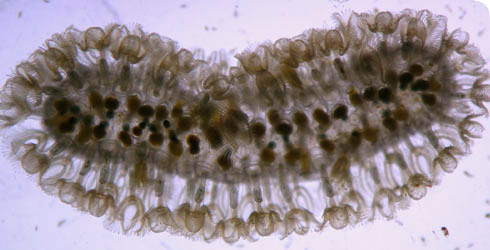Cristatella mucedo
Cristatella mucedo is a freshwater invertebrate sometimes known as a ‘moss animal’.
Individuals called zooids possess tentacle crowns for feeding and collectively form long gelatinous colonies with a soft, transparent body wall.
To the naked eye undisturbed colonies are ‘fuzzy’ and caterpillar-like in appearance.
Colonies are loosely attached to a substrate that might be a root, rock or manmade structure, via their muscular ‘foot’.
They can ‘glide’ slowly and divide by fission.
Species detail
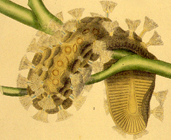
© Allman 1956
According to the eminent Victorian naturalist George Allman ‘a more interesting and beautiful animal than….Cristatella mucedo can scarcely be imagined’ (Allman 1856).
Allman’s iconic image of a Cristatella mucedo colony draped over a stem appears in many textbooks.
-

Taxonomy
Cristatella mucedo is the only known member of the genus Cristatella. Find out what analysis of the organism's DNA tells us about this species.
-
Distribution and habitat
Cristatella mucedo is found mainly in slow moving waters in the northern hemisphere. It attaches to a variety of substrates from plants to plastics. Find out more about its habitat.
-

Biology
Cristatella mucedo colonies form by zooidal budding. Find out how this fascinating animal reproduces.
-

Behaviour
Cristatella mucedo colonies provide a home for numerous other species, but not all of them are welcome. Find out what happens when leeches, snails and midge larvae move in.
-

Conservation
Find out the conservation status of this species.
-

References
Get reference material for Cristatella mucedo.
Images

Scanning electron micrograph of statoblast (approximately 1mm in diameter).
© P. Taylor & B. Okamura.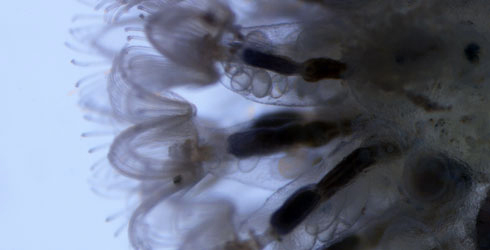
Degenerate Cristatella mucedo colonies filled with statoblasts.
© B. Okamura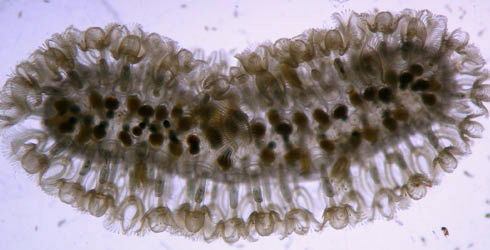
Cristatella mucedo colony.
© B Okamura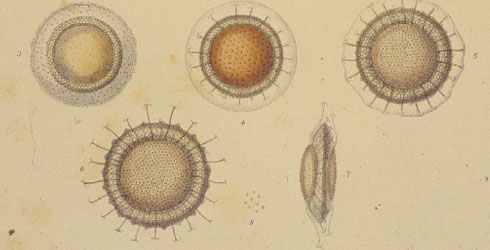
Plate showing colonies and statoblasts of Cristatella mucedo from: Allman, G.J. 1856. A monograph of the Fresh-water Polyzoa, including all the known species, both British and foreign. The Ray Society 28: 1-119.
© Allman
Statoblasts ensnared in feather.
© P Taylor & B Okamura
Sacs of myxozoan parasite within Cristatella mucedo colony.
© B OkamuraAbout the author

Prof Beth Okamura
Merit Researcher in the Bryozoa Group, focusing on the ecology and evolution of bryozoans and their myxozoan parasites.
A word from the author
'My PhD training was in marine ecology, but moving to the University of Oxford meant the ocean was not close to hand. I soon discovered that there are many lakes and ponds in the vicinity that are inhabited by Cristatella mucedo. I became fascinated by the consequences of a life history that allows clonal lineages to persist for an indefinite period of time and the role of waterfowl in dispersal. Although I now work on several freshwater bryozoans, C. mucedo remains my favourite, largely because it is such a beautiful organism.'
Toolbox
Glossary
Aufwuchs are communities of small animals and plants intimately associated with inanimate and living substrata in aquatic environments.
Statoblasts are asexually produced encapsulated buds of a freshwater bryozoan. Statoblasts are released as the colony disintegrates and develop into new organisms in spring.
Metapopulation are a group of spatially separated populations of the same species which interact at some level.
Oligotrophic environments are low in nutrients.
Eutrophic environments are rich in mineral and organic nutrients.
